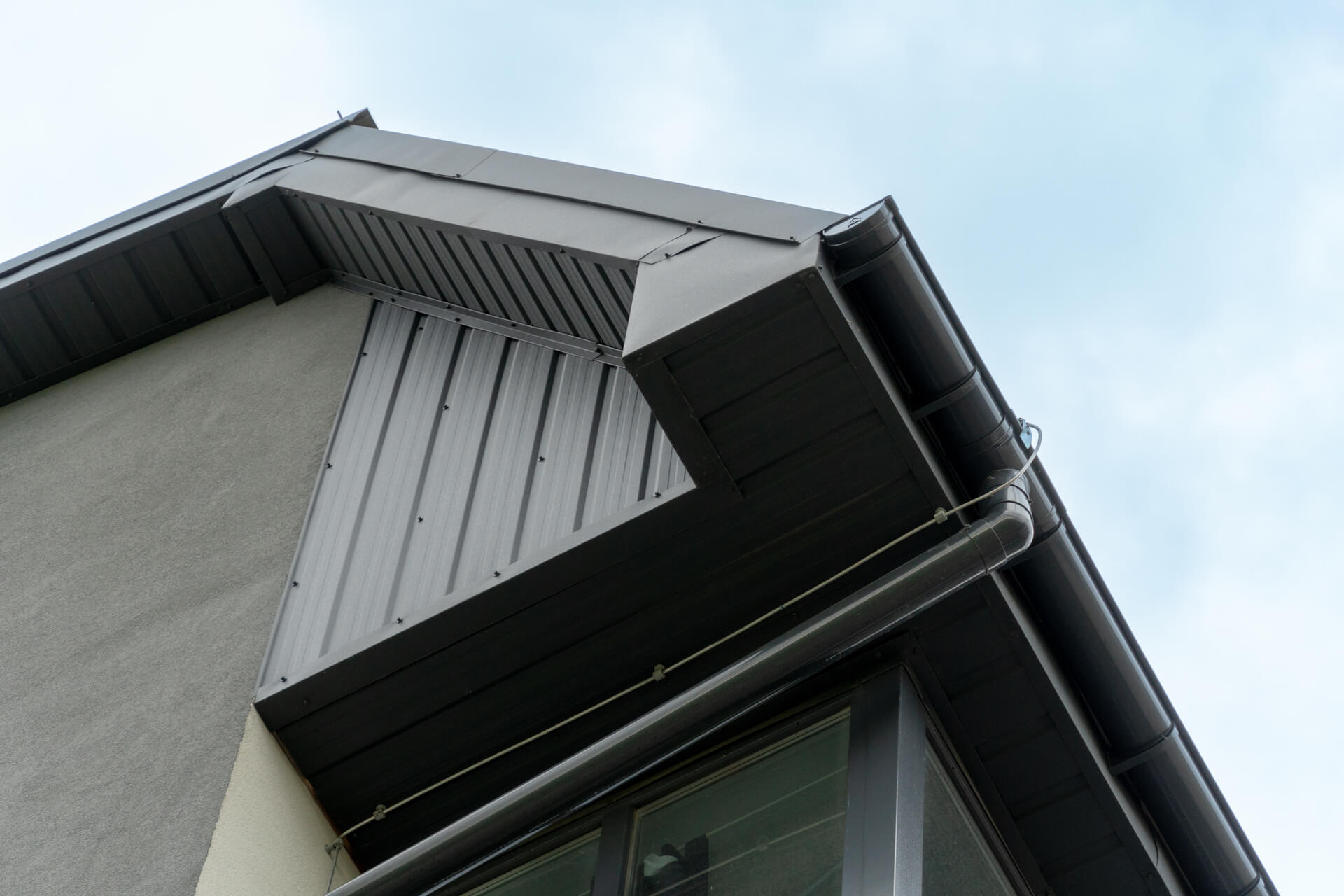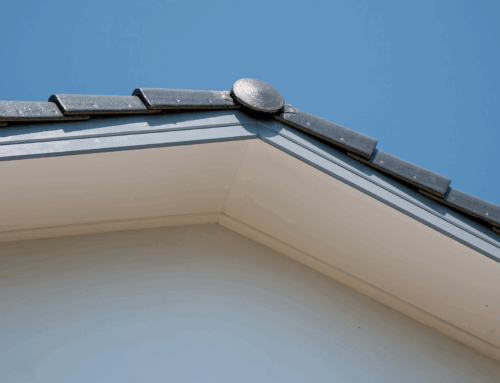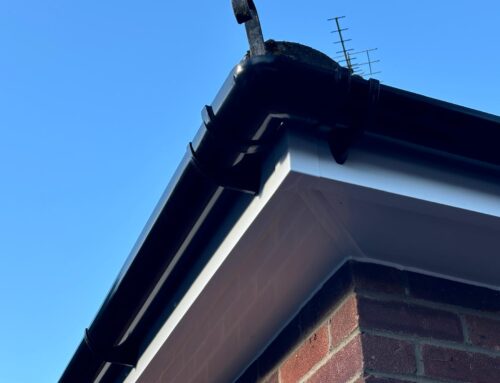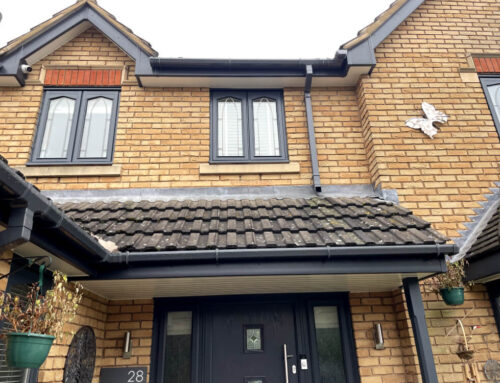For most UK homes, uPVC soffits offer the best combination of durability, low maintenance, and value for money. They resist weathering, won’t rot or warp, and last 20-30 years with minimal upkeep. However, the right choice depends on your budget, property type, and specific requirements.
Choosing the right soffits for your home isn’t just about picking something that looks nice. The type of soffit you select will affect your home’s ventilation, maintenance requirements, and long-term value. With so many materials and styles available, it’s worth understanding your options before making a decision.
Soffits play a crucial role in protecting your roofline and maintaining proper airflow in your loft space. Get this choice wrong, and you could face problems with condensation, rot, or expensive repairs down the line.
Let’s explore the different types of soffits available and help you work out which ones are best suited to your home.
Soffit Materials at a Glance
| Material | Lifespan | Maintenance | Cost | Best For | Key Pros | Main Cons |
|---|---|---|---|---|---|---|
| uPVC | 20-30 years | Very low | Medium | Most UK homes | Weather resistant, won’t rot, easy cleaning, colour variety | Less authentic for period homes |
| Aluminium | 30+ years | Low | High | Modern homes, coastal areas | Strong, lightweight, fire-resistant, spans large areas | Higher upfront cost |
| Timber | 10-15 years | High | Low-Medium | Period properties, conservation areas | Authentic traditional look, natural material | Requires regular treatment, prone to rot |
| Fibre Cement | 15-25 years | Medium | Medium | Balanced option | Paintable, fire resistant, more durable than timber | Can crack on impact, heavier |
Understanding Different Soffit Materials
uPVC Soffits: The Popular Choice
uPVC soffits have become the go-to option for most UK homeowners, and for good reason. They’re incredibly low maintenance, won’t rot or warp, and come in a variety of colours to match your home’s exterior. Most importantly, they’re designed to last for decades without needing replacement.
The main advantage of uPVC is its resistance to the British weather. Unlike timber, it won’t swell in wet conditions or crack during those rare hot summers. You’ll also find that cleaning is straightforward – a simple wipe down with soapy water keeps them looking fresh.
If you’re considering a complete roofline upgrade, it’s worth thinking about how long your current setup will last. Many homeowners are surprised to learn about how often fascias and soffits should be replaced, and uPVC options can significantly extend those replacement intervals.
Aluminium Soffits: Strong and Stylish
Aluminium soffits offer excellent durability and a more contemporary appearance. They’re particularly popular on commercial buildings and modern homes. The material is lightweight, fire-resistant, and won’t rust, making it ideal for coastal areas where salt air can be problematic.
One of the biggest benefits of aluminium is its strength-to-weight ratio. This means it can span larger areas without sagging, making it perfect for homes with wide eaves. However, aluminium tends to be more expensive than uPVC, so budget is often a deciding factor.
Thinking about upgrading your soffits? Get in touch with our team for a free, no-obligation quote. We’ll assess your current setup and recommend the best material for your specific needs and budget.
Timber Soffits: Traditional but High Maintenance
Traditional timber soffits can look stunning, especially on period properties or homes in conservation areas. They offer that authentic, classic appearance that some homeowners prefer over modern materials.
However, timber requires significant ongoing maintenance. You’ll need to treat and paint them regularly to prevent rot, and even with proper care, they typically need replacing more frequently than modern alternatives. If you choose timber, make sure you’re prepared for the long-term commitment.
Fibre Cement: The Middle Ground
Fibre cement soffits combine some of the best features of other materials. They’re more durable than timber but often less expensive than aluminium. They can be painted in any colour and provide good fire resistance.
The downside is that fibre cement can be brittle and may crack if subjected to impact. It’s also heavier than uPVC or aluminium, which can affect installation costs.
Ventilation Considerations
Vented vs Non-Vented Soffits
Proper ventilation is crucial for maintaining a healthy roof space. Vented soffits include small holes or slots that allow air to flow into your loft, helping to prevent condensation and regulate temperature.
Most modern installations include vented soffits as standard, but the exact ventilation requirements depend on your roof type and loft insulation. Too little ventilation can lead to condensation problems, while too much can reduce energy efficiency.
Continuous vs Intermittent Ventilation
You can choose between continuous ventilation (slots running along the entire length) or intermittent ventilation (circular vents spaced at regular intervals). Continuous ventilation generally provides better airflow, but both options can be effective when properly designed.
Not sure about your ventilation needs? Our experienced team can assess your current setup and recommend the right ventilation solution during a free consultation. Give us a call to discuss your specific requirements.
Colour and Style Options
Matching Your Home’s Character
The colour and style of your soffits should complement your home’s overall appearance. White remains the most popular choice as it works well with most property styles and colour schemes. However, you’ll find options in woodgrain effects, grey, black, and even custom colours.
For period properties, woodgrain-effect uPVC can provide the appearance of timber without the maintenance requirements. Modern homes often suit clean lines and contemporary colours like anthracite grey or black.
Planning Permission and Conservation Areas
If your home is in a conservation area or is a listed building, you may need planning permission to change your soffits. It’s always worth checking with your local planning office before starting any work, especially if you’re moving from timber to uPVC.
Cost Considerations and Value
The initial cost of different soffit materials varies significantly, but it’s important to consider long-term value rather than just upfront expense. While timber might seem cheaper initially, the ongoing maintenance costs can quickly add up.
uPVC offers the best balance of initial cost and long-term value for most homeowners. The material itself is reasonably priced, and the minimal maintenance requirements mean lower ongoing costs. Many homeowners are interested to discover whether new fascias and soffits add value to their home – and the answer is generally yes, especially when you choose quality materials and professional installation.
Ready to explore your options? Contact us for a detailed quote that breaks down costs and helps you understand the long-term value of different materials. We also provide commercial services for businesses looking to upgrade their property’s roofline.
Installation Quality Matters
Regardless of which material you choose, the quality of installation makes a huge difference to performance and longevity. Poor installation can lead to problems with water ingress, inadequate ventilation, and premature failure.
Professional installation ensures proper fitting, adequate support, and correct ventilation. It also typically comes with guarantees that protect your investment. While DIY installation might seem tempting to save money, the potential costs of getting it wrong often outweigh any initial savings.
If you’re considering a complete roofline upgrade, you might also want to think about your fascias and guttering at the same time, as these elements work together to protect your home.
Making Your Decision
The best soffits for your home depend on several factors:
Planning Permission and Conservation Areas
For most UK homes, uPVC soffits provide the best combination of performance, durability, and value. They’re suitable for all property types, require minimal maintenance, and come with long guarantees.
Why Choose HomeFix for Your Soffit Installation
At HomeFix, we’ve been helping homeowners across Milton Keynes and surrounding areas choose and install the right soffits for over a decade. As a family-run business, we understand that your home is your biggest investment, and we’re committed to helping you make the right choices.
Our team works exclusively with industry-leading materials that meet rigorous BBA standards, and every installation comes with a comprehensive 10-year guarantee. We take the time to assess your specific needs, explain your options clearly, and provide honest advice about what will work best for your home and budget. You can read more about our promise to customers and see what previous clients say in our customer testimonials.
We provide services across Buckinghamshire, Bedfordshire, Hertfordshire, and Northamptonshire. Check if we cover your area by visiting areas we cover.










Leave A Comment